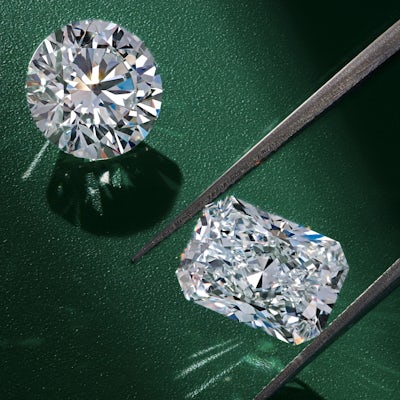With regards to buying a jewel, understanding its quality is fundamental. The decision between GIA oder IGI can be a critical choice. Both are respectable associations eminent for their jewel reviewing, yet they have unmistakable techniques and highlights. This article will dig into the subtleties of each to assist you with pursuing an educated choice.
Figuring out GIA and IGI
What is GIA?
The Gemological Establishment of America (GIA), established in 1931, is one of the most prestigious and broadly perceived gemological labs on the planet. Known for its thorough reviewing principles, GIA has laid down a good foundation for itself as a main expert in precious stone assessment. Their reviewing framework is generally regarded and utilized by diamond setters worldwide.
What is IGI?
The Worldwide Gemological Foundation (IGI), laid out in 1975, is another unmistakable precious stone evaluating association. While IGI is exceptionally respected, it is frequently viewed as somewhat less rigid contrasted with GIA. IGI intends to offer available evaluating administrations and is known for its thorough reports and worldwide reach.
Examination of Evaluating Norms
GIA Reviewing Framework
GIA’s reviewing framework is eminent for its severe and steady norms. The GIA assesses jewels in view of the Four Cs: Carat Weight, Cut, Variety, and Lucidity. Every viewpoint is carefully evaluated:
Carat Weight: Measures the size of the jewel. A higher carat weight by and large implies a more important precious stone.
Cut: Assesses the precious stone’s extents, balance, and clean. The cut influences how light is reflected and the way that the precious stone shines.
Variety: Surveys the presence of any variety inside the precious stone, going from D (lackluster) to Z (light yellow or brown).
Lucidity: Alludes to the presence of interior or outside defects, known as incorporations and flaws.
GIA’s reviewing reports are nitty gritty and incorporate data like the precious stone’s fluorescence, extents, and extra remarks about its general appearance.
IGI Evaluating Framework
IGI likewise uses the Four Cs however is noted for consolidating extra considers its reviewing interaction:
Carat Weight: Like GIA oder IGI estimates the precious stone’s size.
Cut: IGI assesses how well a precious stone’s features connect with light, yet their measures could contrast somewhat concerning reviewing accuracy.
Variety: IGI’s variety reviewing is much the same as Gia’s, surveying the jewel from D to Z.
Lucidity: IGI investigates the presence of inside and outside attributes, however their clearness evaluating may be less rigid contrasted with Gia’s.
IGI reports frequently incorporate extra data, for example, jewel shape, clean, and evenness. Their reports are intended to be thorough, making them open for different purchasers.
Report Quality and Straightforwardness
GIA Reports
GIA reports are known for their straightforwardness and itemized depictions. Each report incorporates an extraordinary report number, permitting purchasers and venders to confirm the jewel’s evaluating through GIA’s internet based data set. The lucidity and precision of GIA reports are key justifications for why they are exceptionally pursued by the two goldsmiths and shoppers.
IGI Reports
IGI reports are additionally careful however may shift somewhat in the degree of detail gave. They incorporate an exceptional report number and can be checked through IGI’s internet based stage. While IGI reports are by and large solid, some industry specialists feel that their reviewing may in some cases be somewhat more merciful contrasted with GIA.
Market Discernment and Worth
GIA’s Market Effect
GIA’s thorough evaluating principles have prompted areas of strength for a discernment. GIA-reviewed precious stones are frequently seen as having higher worth and are regularly utilized in top of the line gems. The GIA’s standing for exactness and consistency makes its reports profoundly confided in the jewel business.
IGI’s Market Position
IGI is likewise a regarded association however is once in a while thought to be less prestigious contrasted with GIA. While IGI’s evaluating reports are exact, a few purchasers might see IGI-reviewed precious stones as having a marginally lower market esteem because of the impression of more tolerant reviewing principles. In any case, IGI is still generally utilized and regarded in the business.
Picking either GIA and IGI
Elements to Consider
Reason for Procurement: On the off chance that you’re purchasing a precious stone as a venture or for high-esteem gems, a GIA report may be ideal because of its regarded standing.
Financial plan: For those on a more tight financial plan, IGI offers a more savvy choice without compromising a lot on quality.
Individual Inclination: Think about your own solace and confidence in the reviewing association. Both GIA and IGI have their benefits, and individual inclination assumes a huge part.
Last Suggestions
For Top of the line Buys: Settle on GIA-evaluated precious stones in the event that you look for the most significant level of affirmation and market esteem.
For General Buys: IGI gives dependable evaluating at a more available price tag, making it a decent choice for regular gems.
Conclusion
In conclusion, both GIA and IGI offer important reviewing administrations, each with its own assets. GIA is broadly viewed as the highest quality level in jewel evaluating, giving thorough and nitty gritty reports that improve market certainty. IGI, then again, offers far reaching and open reviewing administrations, going with it a famous decision for some purchasers. At last, the decision among GIA and IGI will rely upon your particular necessities, inclinations, and the motivation behind your jewel buy.





